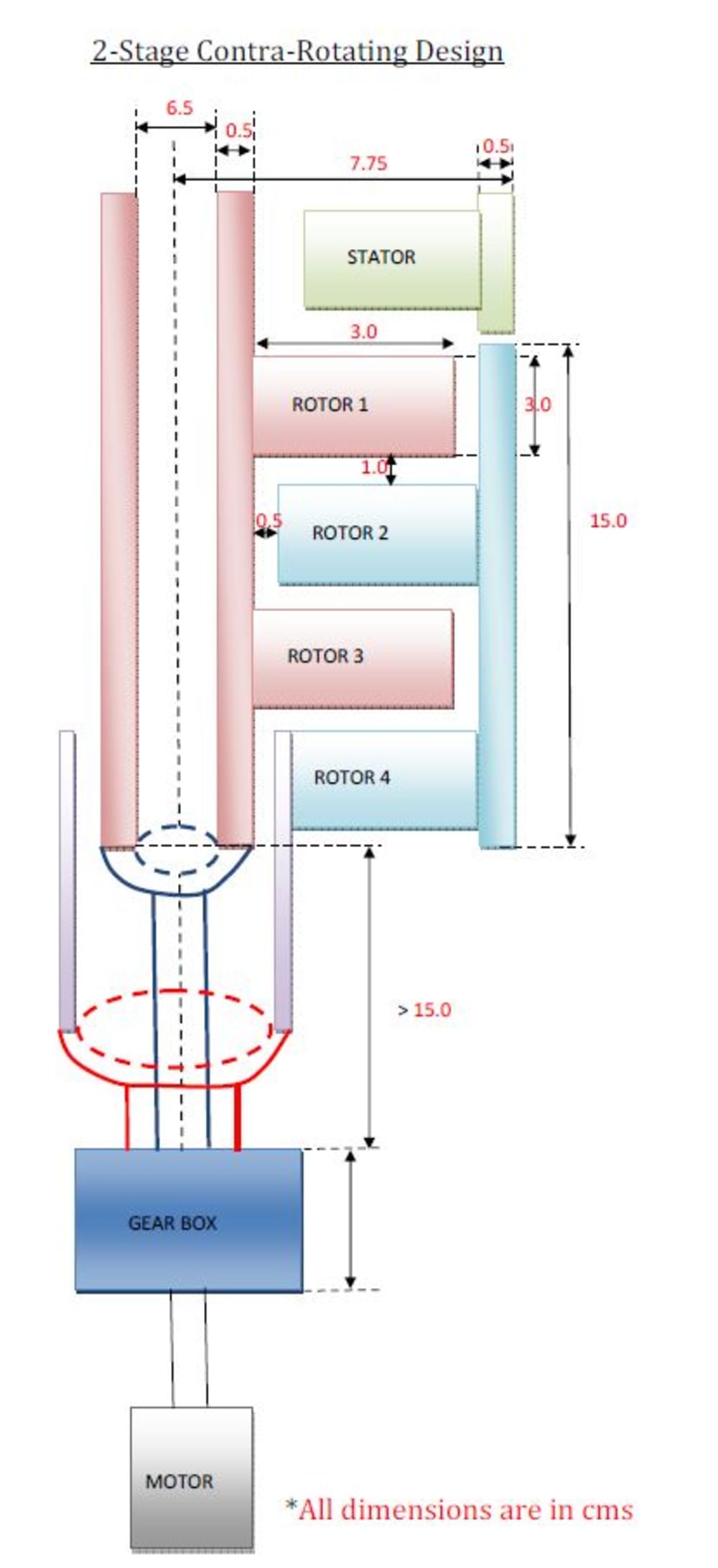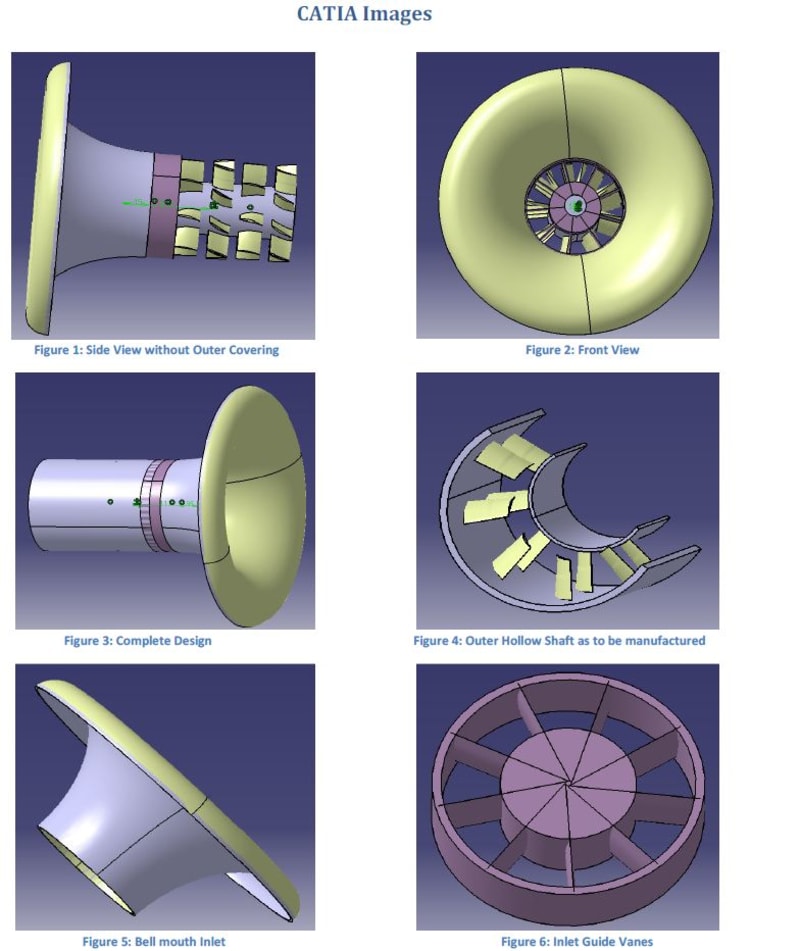
A primary goal in compressor design for Gas Turbine Engines is the reduction of size and weight. It is also beneficial to reduce the number of parts, especially blades which are expensive to produce and maintain. To this end it is necessary to develop means of improving the performance of individual compressor stages so that fewer stages are required for a given application.
The aim of this project is to develop a working model of a multi-stage contra-rotating mini axial compressor to demonstrate its multifarious benefits over a conventional axial compressor. Till now no aircraft industry is using a contra-rotating compressor. So, our mini model is being made to overcome the mechanical challenges of this type of configuration for the future use in the aircraft industry.
The rotor does work on the fluid given by:
WR = ?(r2v2 – r1v1)
To increase the work of a stage:
(1) Increase the tip speed;
(2) Increase the change in swirl or turning.
However, tip speed in compressors is limited by structural constraints so increased turning must be considered as a means to obtain any increase in work. This is termed counter-rotation.
A contra-rotating compressor has alternate rotors rotating in the opposite sense, eliminating all the stators and hence, decreasing the compressor length & weight significantly. This will be beneficial in terms of fuel consumption with more thrust/weight ratio. This kind of compressor also provides more pressurization in reduced length and has better characteristics like surging and stalling.
The only reason they are not used in real engines is because of its mechanical complexities in terms of how to get alternate rotors counter-rotating as the normal multi-stage spool configurations used in current engines.
The 2nd and 4th rotor blades are to be arranged in inward cantilever manner integrated to a rotating casing (outer shaft). The 1st and 3rd stage rotors are to be integrated to an inner hollow shaft which is in counter-rotation with the outer casing. An outer hollow support is also provided in order to have a static support around the outer shaft.
In this case it is possible to have spools configuration on both the outer and inner shaft which will open the way for HP and LP compressor, turbine configuration and a possible integration to turbofan engines.
Attached are some of the CAD drawings of the compressor with the minimal change in current mechanical design of gas turbine engines with minimal complexity.
Having an outer shaft instead of having gears or another system was chosen because of simplicity of the design, as it is less complex it is very much robust. This simplicity also offers its easy manufacturability.
The demonstrator compressor is being fabricated in five parts out of nylon plastics using rapid proto-typing and vacuum casting process. The outer rotating casing of the compressor is to be housed inside a non-rotating outer backbone shell using roller bearings. A bell mouth inlet with an area ratio of 4 is to be integrated with this backbone shell.
-
Awards
-
 2012 Top 10 Most Popular
2012 Top 10 Most Popular
Like this entry?
-
About the Entrant
- Name:Amit Mangtani
- Type of entry:teamTeam members:Apoorv Maheshwari, Student, IIT Bombay
Achyut Panchal, Student, IIT Bombay
Pranav Raheja, Student, IIT Bombay
Raj Patel, Student, IIT Bombay
Mitanshu Sharma, Student, IIT Bombay
Nishant Khanduja, Student, IIT Bombay - Software used for this entry:CATIA, Turbogrid, MATLAB
- Patent status:none








